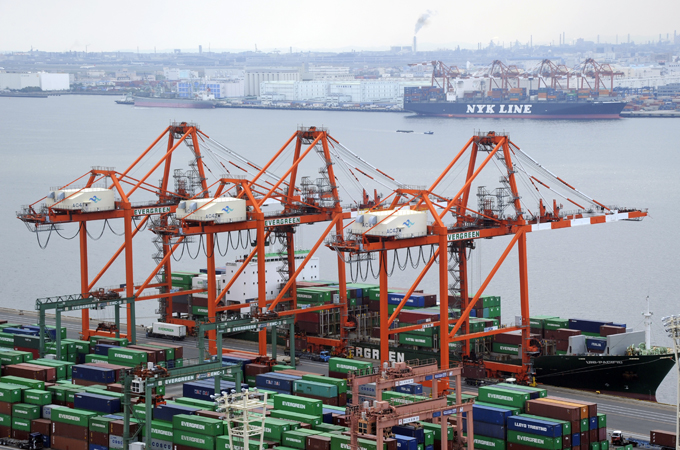Outlook for sustained recovery clouded by rising raw material costs and spike in Omicron infections.
Japan’s economy rebounded in the final three months of 2021 as falling coronavirus cases helped prop up consumption, though rising raw material costs and a spike in Omicron variant infections cloud the outlook.
Bank of Japan Governor Haruhiko Kuroda also highlighted escalating tensions in Ukraine as a fresh risk to the central bank’s forecast for a moderate economic recovery.
The world’s third-largest economy expanded an annualised 5.4 percent in October-December after contracting a revised 2.7 percent in the previous quarter, government data showed on Tuesday, falling short of a median market forecast for a 5.8 percent gain.
Some analysts expect the economy to slump again in the current quarter as rising COVID-19 cases keep households from shopping and supply chain disruptions hit factory output.
“The economy will likely stall in January-March or it could even contract, depending on how the Omicron variant affects service-sector consumption,” said Takeshi Minami, chief economist at Norinchukin Research Institute.
Economic growth was driven largely by a 2.7 percent quarter-on-quarter rise in private consumption, which accounts for more than half of Japan’s gross domestic product (GDP).
Growth in consumer spending
The expansion in consumer spending, which was bigger than market forecasts for a 2.2 percent gain, came after Japan ended coronavirus curbs in October.
Capital expenditure also rose 0.4 percent, roughly in line with market forecasts. External demand added 0.2 percent point to growth, a sign exports continued to benefit from the global recovery.
“As the economy re-opened, service consumption, such as for hotels, restaurants and entertainment, got a big boost,” said Wakaba Kobayashi, an economist at Daiwa Institute of Research.
Japan’s recovery, however, continues to lag other advanced economies, forcing the BOJ to keep monetary policy ultra-loose, even as other central banks eye interest rate hikes.
The country’s seasonally-adjusted real GDP, about 541 trillion yen ($4.69 trillion), remains below the pre-pandemic level of late 2019.
A record spike in Omicron cases forced the government to impose loose curbs on most areas and keep borders closed, which likely dampened consumption since the outset of this year.
Rising infections have also forced some manufacturers to halt production, causing output disruptions and delivery delays at auto giants, such as Toyota Motor Corp.

Meanwhile, creeping import costs add risks to Japan’s fragile recovery.
“Heightening tensions in Ukraine could have unfavourable effects on global and Japanese growth if they spark a surge in fuel and commodity prices,” BOJ governor Kuroda told parliament on Tuesday.
Hiroshi Shiraishi, senior economist at BNP Paribas Securities, expects economic growth to slow to an annualised pace of 1 to 1.5 percent in January-March — or even decline.
“The economy’s recovery could delay into later this year as the Ukraine crisis may drive up fuel costs and dampen corporate appetite for capital expenditure,” he said.
“There’s not much left for the government and the central bank to do in terms of new stimulus measures. Both fiscal and monetary policy have reached a limit.”
SOURCE: REUTERS


